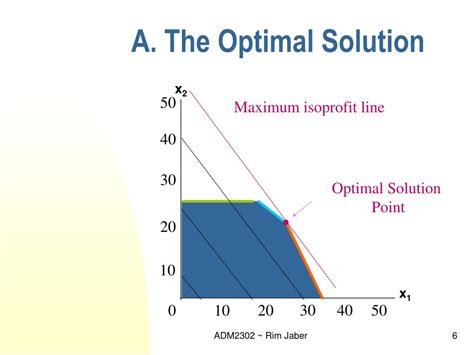Optimal strength training frequency for sustained peak male performance?

Understanding the Principles of Muscle Growth and Recovery
For men aspiring to achieve and sustain peak physical performance, strength training is a non-negotiable pillar. However, a common question arises: how often should one hit the weights? The answer isn’t a simple number, but rather a dynamic interplay of physiological principles, individual circumstances, and specific goals. At the core of effective strength training lies the balance between stimulating muscle growth and allowing adequate time for recovery and adaptation.
When we lift weights, we create microscopic tears in muscle fibers. The body then repairs and rebuilds these fibers stronger and larger – a process known as hypertrophy. This repair process, alongside muscle protein synthesis (MPS), is crucial. MPS can remain elevated for 24-48 hours post-workout, suggesting that stimulating a muscle group more than once a week might be beneficial for maximizing growth. Yet, over-stimulation without sufficient recovery can lead to diminishing returns, overtraining, and even injury, hindering long-term performance.

Common Training Frequencies and Their Impact
Full-Body Workouts (2-3 times/week)
Training each major muscle group 2-3 times per week through full-body sessions is a highly effective strategy, particularly for beginners and intermediate lifters. This approach ensures frequent stimulation of muscle protein synthesis across all body parts. The benefit here is consistent exposure to training stimuli, which can accelerate strength gains and muscle hypertrophy. With ample rest days in between, the body has significant time to recover and adapt before the next session.

Split Routines (3-5 times/week)
Split routines involve dividing your weekly training into different muscle groups or movement patterns (e.g., upper/lower, push/pull/legs). This allows for higher volume and intensity per muscle group during a single session, as you’re not fatiguing the entire body. For example, an upper/lower split might involve training upper body twice a week and lower body twice a week. This method is popular among intermediate to advanced lifters who can handle higher training volumes for specific body parts and want to dedicate more focus to individual muscles. While individual muscle groups get more recovery time between direct sessions, the overall training frequency for the body is higher.

High-Frequency Training (4+ times/week)
For advanced athletes or those with specific goals (e.g., powerlifting, Olympic weightlifting), even higher frequencies are sometimes employed. This could involve training specific lifts or muscle groups 3-5+ times a week. This approach often requires meticulous programming, precise recovery strategies, and a deep understanding of one’s own body to avoid overtraining. While it can lead to significant skill acquisition and strength gains in specific movements, it demands an exceptional commitment to nutrition, sleep, and stress management.
Key Factors in Determining Your Ideal Frequency
The ‘optimal’ frequency isn’t universal; it’s highly individualized. Several factors play a critical role in determining what will work best for you:
- Training Experience: Beginners often respond well to lower frequencies (2-3 times/week) as their bodies are still adapting. Advanced lifters may benefit from higher frequencies to continually challenge their muscles.
- Training Volume & Intensity: High-volume, high-intensity workouts require more recovery time, potentially necessitating lower frequency for that specific muscle group or session. Conversely, lower-intensity sessions can be performed more frequently.
- Recovery Capacity: Factors like sleep quality, nutrition, stress levels, and age significantly impact your body’s ability to recover. Someone getting 8-9 hours of quality sleep, eating nutrient-dense foods, and managing stress will likely tolerate higher frequencies than someone who isn’t.
- Specific Goals: Are you primarily focused on strength, hypertrophy, endurance, or skill acquisition? Different goals may lend themselves to different frequency approaches.
- Lifestyle & Time Commitment: Your work schedule, family commitments, and available gym time will naturally dictate how often you can realistically train. Consistency trumps sporadic, overly ambitious plans.

Periodization and Listening to Your Body
For sustained peak performance, the concept of periodization is invaluable. This involves systematically varying your training frequency, intensity, and volume over time to prevent plateaus, minimize the risk of overtraining, and ensure continuous progress. For instance, you might cycle through phases of higher frequency/lower intensity, followed by lower frequency/higher intensity. This strategic variation keeps the body adapting and prevents burnout.
Ultimately, the most important aspect of determining optimal frequency is listening to your body. Signs of inadequate recovery – persistent fatigue, decreased performance, prolonged muscle soreness (beyond typical DOMS), irritability, or disrupted sleep – are clear indicators that you might be training too frequently or with too much volume/intensity for your current recovery capacity. Adapting your schedule based on these signals is crucial for long-term health and performance.

Conclusion
While there’s no single magic number, most men aiming for sustained peak performance will find optimal results training major muscle groups 2-4 times per week. Full-body or upper/lower splits often hit this sweet spot, providing sufficient stimulus for growth while allowing adequate recovery. However, the true ‘optimal’ frequency is a moving target, requiring ongoing assessment of your training experience, volume, intensity, recovery capabilities, and specific goals. Prioritize consistency, progressive overload, quality nutrition, and sufficient sleep, and be prepared to adjust your frequency as your body adapts and your life circumstances change. By doing so, you can build a sustainable strength training regimen that fuels peak male performance for years to come.









